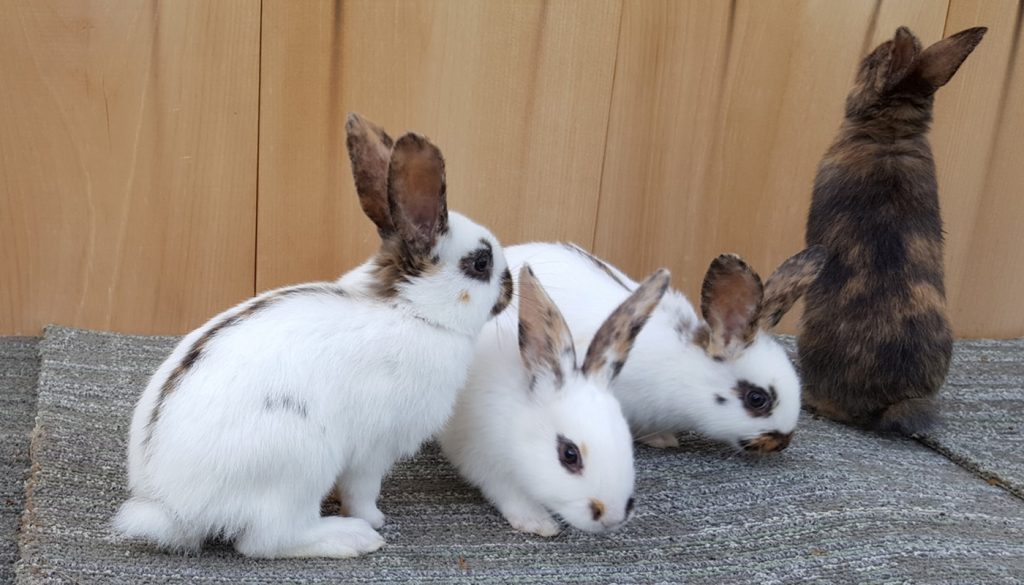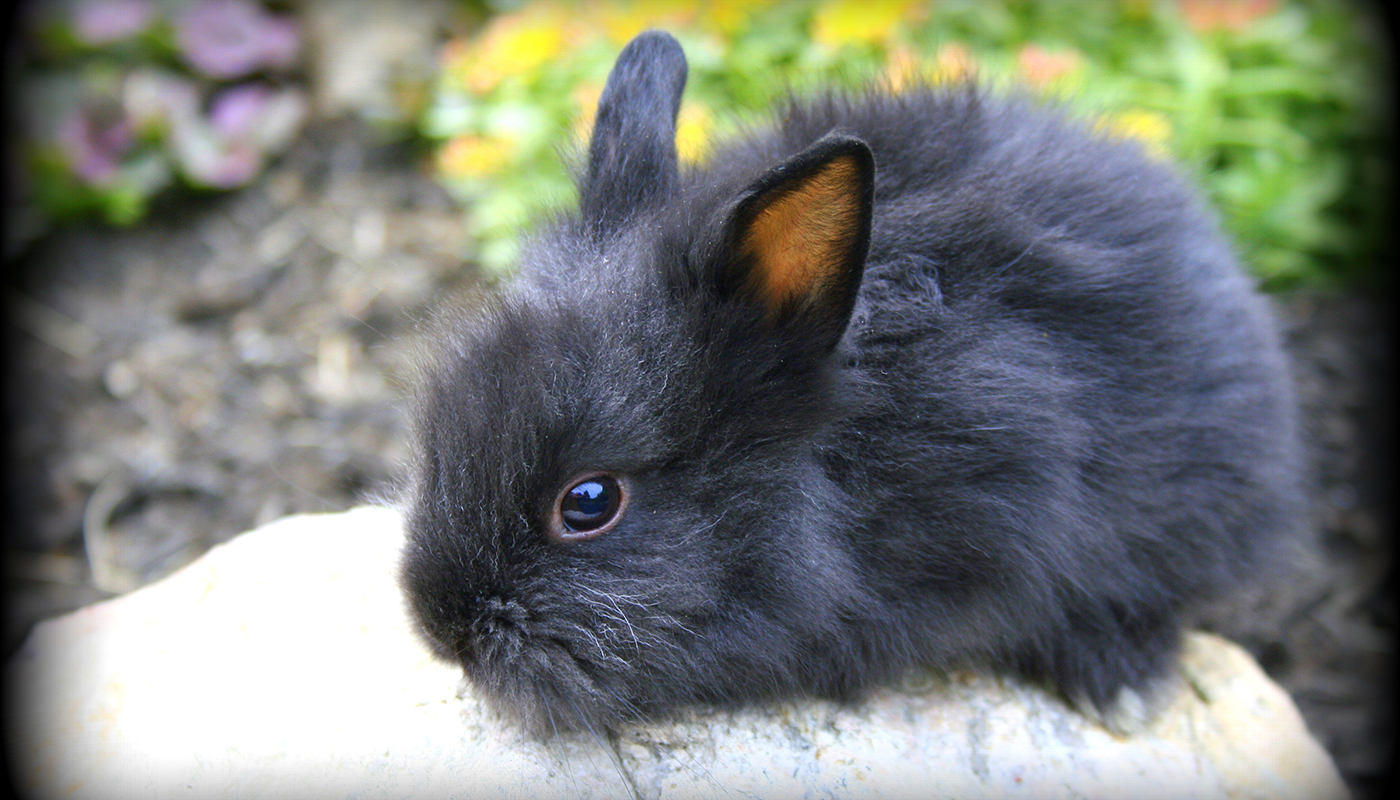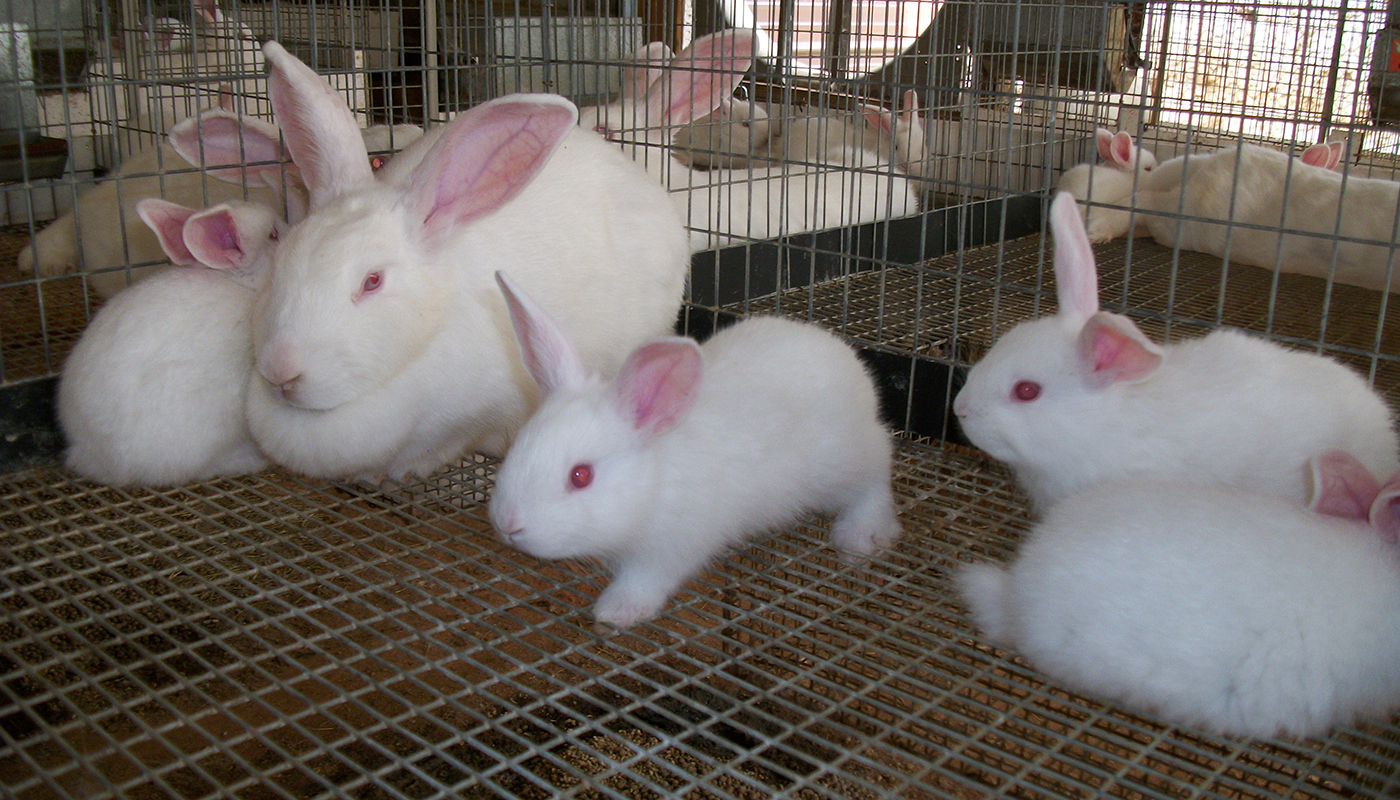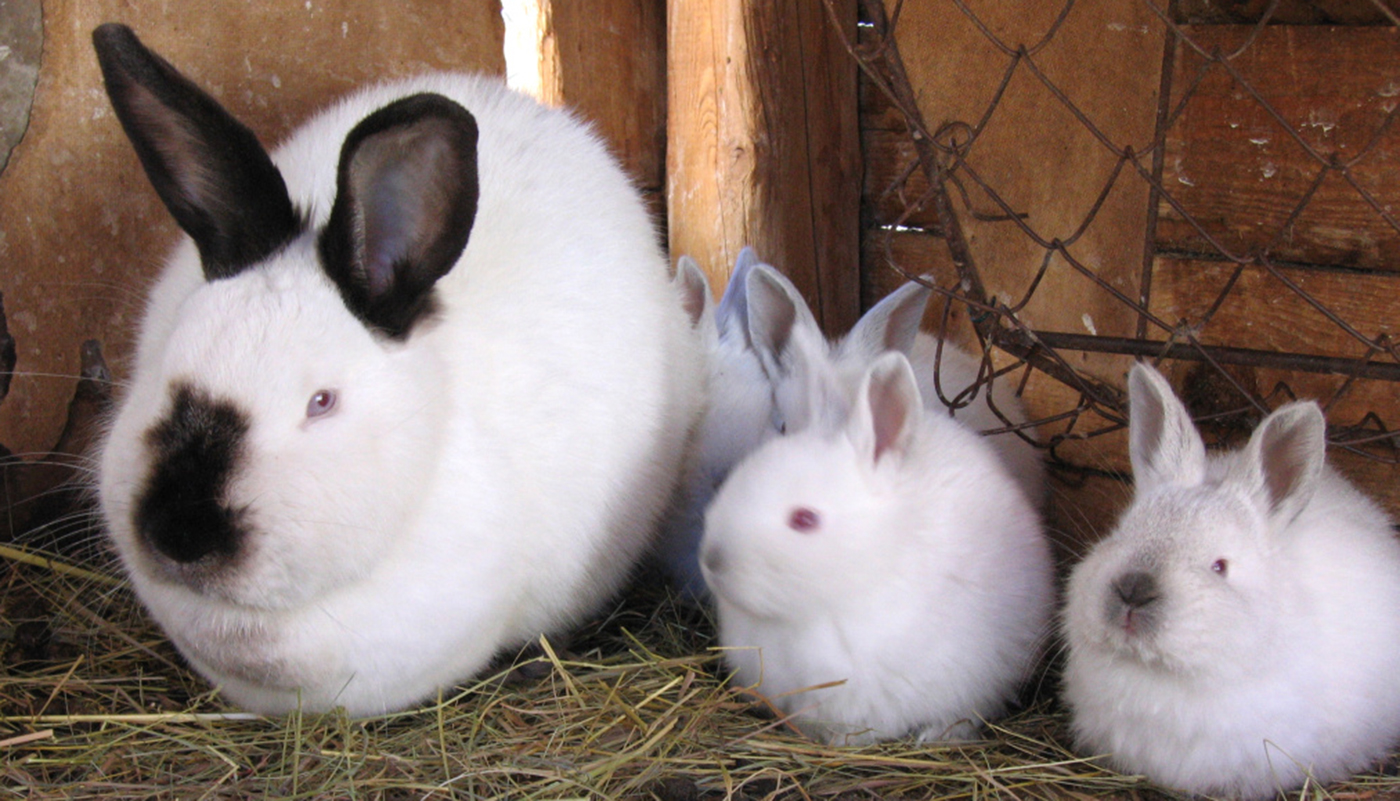
The Rhinelander is a beautiful rabbit that has very pretty markings of black and orange splotched on them. They have sweet friendly natures and make good pets although breeding them is not recommended for the novice. But a novice and even supervised children can raise them as the family pet as they are quite a low maintenance rabbit breed.
BREED PROFILE OVERVIEW
|
|
|---|---|
| Breed Name: | Rhinelander |
| Other Names: | Rheinische Schecke |
| Country of Origin: | Germany |
| Breed Purpose: | Show and pets |
| Breed Size: | Large |
| Breed Weight: |
Female/Doe: 7 to 9 lbs. Male/Buck: 7 to 9 lbs. |
| Breed Color(s): | White base coat with either black and orange or blue and fawn markings |
| Physical Appearance: |
Their appearance/body type pretty much resembles that of white hare breeds with various markings on its body. Their body is fully arched and the appear alert and ready to spring just like a hare. They usually have a slim figure with their legs held parallel to their body. They have long ears that stand erect from their heads and do not touch at the base. Their ears have leopard spots on them that are a darker shade than their solid ear coloring which is usually the same as the body markings. Their coat is short, dense and soft it does not require much grooming to keep it neat. The coat is white with black and orange markings along the spine in a dorsal stripe. A butterfly shape on the muzzle, eye rings completely around the eyes and spots on both sides of the rabbit’s hips with a splotch on their longish tail. |
| Temperament: | Inquisitive, active, friendly, gentle and lovable |
BREED CHARACTERISTICS
- They have a decent sized litter and the females make very good mothers. Most rabbits have good maternal instincts and some breeds can be a bit testy and protective when they have young. They can also be uncharacteristically moody during mating season.
- Their young open their eyes around 7 to 14 days with an average of 10 days after birth. When their eyes have opened, they can start to be introduced to food such as alfa pellets and water.
- Even when the young start to eat it does not mean they are quite ready to be weaned from their mothers. The mothers will know when it is time to wean her young. It is important for the baby rabbit’s health, growth, immune system and development of a proper digestive system that they do not be removed from their mother for at least 8 weeks. They usually require her milk for a minimum of 8 weeks after birth.
- Their average lifespan is 5 to 8 years although there have been some breeds that have lived to 10 years with the proper care.
| Good Pets? | They make good pets and companions for the elderly, families with children, singles, and people living in apartments as they can be both indoor or outdoor pets or a combination of the two. |
| Child Friendly? | Children should be supervised around animals and properly taught how to look after them and handle them. Rabbits can bite and scratch |
| Ideal Climate: | All climates – rabbits should never be left outside without proper shelter and housing that must be raised off the ground and predator safe. |
| Conservation Status: | Listed by the *ALC Status/Rarity: Listed as watch by the American Livestock Conservancy. But they are also said to be a rare breed to come by. |
| Recognized by the ARBA? | Yes, they are a recognized breed by the American Rabbit Breeders Association. They have a few recognized colors please refer to the breeds color section of this article for more information. |
| Rabbit Associations/Clubs: | Rhinelander Rabbit Club of America |
| Where to buy them? | The Rhinelander Rabbit Club of America can help with a list of registered breeders in an around various areas in the United States of America. The USA Rabbit Breeders Directory is a useful resource to find breeders, clubs, and information about the breed. |
| Note: *ALC stands for American Livestock Conservancy | |
GENERAL INFORMATION
For a slicker more glossy or shiny pelt, it is advisable to groom them every two to three weeks. During the molting season, it is advisable to groom rabbits every week to remove stray hairs.
Rabbits can be quite lively and energetic and need quite a bit of exercise and stimulation. It is a good idea to have a nice safe and secure run for them to play in and stretch their legs.
Toys, tubes and various obstacle courses for them is a good way to help them expend some of their energy and they are really fun to watch at play.
They are also sociable animals that do like to have a friend or two to play with.
Regular health and critter check once a week or every second week should become a habit. This will help to keep your rabbit(s) in excellent condition and health. Grooming does not require a lot if their coats are low maintenance. But it is a good idea to give them a nice gentle brushing to help remove any excess hairs regardless of the length of their coats.
It is also a good idea to check on the state of their teeth to ensure that they are not too long and causing the rabbit any discomfort.
Rabbits teeth never stop growing and getting fresh hay on a regular basis helps to control the growth of their teeth.
Rabbits need a good diet of quality pellets that are filled with their daily nutritional requirements. They do love dandelions, cabbage and various fruits as a nice tasty treat.
Rabbits that have quite a short coat are not really at risk for most of the digestive problems long fur seem to cause rabbits. They can still get other ailments such as flystrike, ear mites or overgrown teeth. These can all be controlled/maintained or avoided altogether with the proper health and grooming care of the rabbit(s).
If you have two rabbits and do not want to breed them it is possible to spay female rabbits and neuter male rabbits.
The females can be spayed as young as four months old, but vets prefer to wait until they are at least six months old before doing so.
The young males can be neutered as young as found months old.
Rabbits, just like any other pet, should be dewormed on a regular basis. Check with your local vet for proper guidance on the administering of worm medication to your animals.
HISTORY
The Rhinelander rabbit breed was developed in Germany by a rabbit fancier who was a postman by trade. Josef Heintz who was a resident of Grevenbroich in North Rhine-Westphalia, Germany in the early 1900s.
The Rhinelander made its first showing at a show in 1902 and was an instant success. The breed was recognized in Germany as a breed under the name of “Rheinische Schecke” in 1905.
Seventeen of the “Rheinische Schecke” were exhibited at the West German Rabbit Exhibition in 1908 and in 1924 Holland received their first rabbit pair. The next country to receive a shipment of the breed was England.
Soon the breed lost favor as the markings on the rabbit varied a great deal with the breed and which made the standards change. As the breed got more difficult to breed due to the standard calling for more conformation memberships dropped off.
The “Rheinische Schecke” rabbit breed was first imported to America in 1923 and became recognized by the National Breeders and Fanciers Association of America in 1924.
When the first Book of Standards was published in 1930 the breed had become known as the Rhinelander.
Unfortunately, the breed completely disappeared from America by 1932 for various reasons until 1975 when Robert Herschbach from California saw the breed shown in Germany.
He bought some of the rabbits to America and the breed was re-established in the United States of America as a recognized breed by the American Rabbit Breeders Association in 1975.
Video
USEFUL LINKS
- American Rabbit Breeders Association
- Fur Commission USA
- North American Meat Institute
- American Livestock Conservancy
- Animal Shelter (ASPCA)
- American Veterinary Medical Association
- American Animal Welfare Society
- American Animal Control
- American Society of Animal Science
- United States Department of Agriculture
- United States Department of Agriculture – Rabbit Meat
 Giant Angora Rabbit – Everything You Need to Know
Giant Angora Rabbit – Everything You Need to Know Lilac Rabbit – Everything You Need to Know
Lilac Rabbit – Everything You Need to Know Common Rabbit Health Problems and How to Spot Them Early
Common Rabbit Health Problems and How to Spot Them Early Lionhead Rabbit – Everything You Need to Know
Lionhead Rabbit – Everything You Need to Know Lionhead-Angora Mix Rabbit: Charming Hybrid Pet
Lionhead-Angora Mix Rabbit: Charming Hybrid Pet New Zealand Rabbit – Everything You Need to Know
New Zealand Rabbit – Everything You Need to Know Pro’s and Cons of Rabbit Meat
Pro’s and Cons of Rabbit Meat Thrianta Rabbit – Everything You Need to Know
Thrianta Rabbit – Everything You Need to Know Belgian Hare Rabbit – Everything You Need to Know
Belgian Hare Rabbit – Everything You Need to Know 13 Giant Rabbit Breeds You Love to Know
13 Giant Rabbit Breeds You Love to Know Californian Rabbit – Everything You Need to Know
Californian Rabbit – Everything You Need to Know Mini Lop Rabbit – Everything You Need to Know
Mini Lop Rabbit – Everything You Need to Know